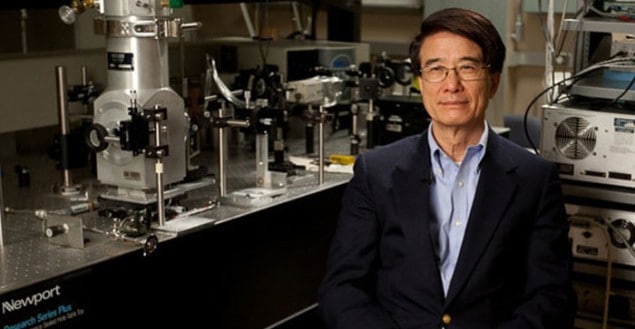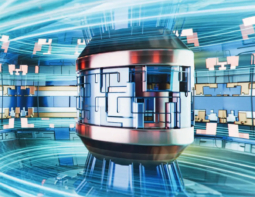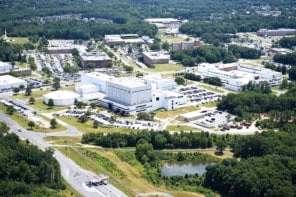Flash Physics is our daily pick of the latest need-to-know developments from the global physics community selected by Physics World‘s team of editors and reporters

How to make a superconductor from a non-superconductor
Calcium-iron arsenide, which is usually not a superconductor, has been made to superconduct by Paul Chu and colleagues at the University of Houston in the US. This was done using an idea first proposed in the 1970s – that superconductivity can be enhanced or even created at the interface between two materials. Chu and colleagues heated calcium-iron arsenide so that it coexists in two different structural phases, neither of which is superconducting. Then the sample is cooled carefully to preserve the two phases. When cooled to below 25 K, the material is a superconductor at the interface between the phases. While this superconducting temperature is too low to be of practical use, Chu believes that the work offers a new direction in the search for more efficient, less expensive superconducting materials. The research is described in Proceedings of the National Academy of Sciences.
Study reveals top Russian physics institutions
A bibliometric study by researchers at the National Research University Higher School of Economics (HSE) in Russia has measured the scientific impact of 39 physics institutions belonging to the Russian Academy of Sciences (RAS). Carried out by HSE sociologists Yuriy Kachanov and Natalia Shmatko, together with Yulia Markova from the American Association for the Advancement of Science, they found that the Joint Institute for Nuclear Research, the Alikhanov Institute for Theoretical and Experimental Physics, the Lebedev Physical Institute – all based in Moscow – and the Ioffe Institute in St Petersburg are the top physics research institutions in the country. The study looked at the number of researchers based at each institution, together with publication statistics. “We were able to prove that big institutions held authority on the global science scene and produced more scientific data, which was highly received by the physics community,” says Shmatko.
Advancing instrumentation at the National Physical Laboratory

A new initiative aimed at strengthening ties between tech firms and the UK’s National Physical Laboratory (NPL) was officially launched last night at the Institute of Engineering and Technology in London. The project, known as NPL Instruments, will see experts at the Teddington-based national measurement institute work closely with companies to develop bespoke instruments, products and related services. At the event, NPL chief-executive Peter Thompson told Physics World that the new business unit would focus on products at a moderate stage of development (equivalent to Technology Readiness Levels 4 and 5) in the areas of advanced manufacturing, environment, health and life sciences, and the digital sector. NPL’s work on instruments tends to be “hidden in plain view”, Thompson told an audience of around 100 lab personnel, industry scientists, engineers and academics at the event, adding that the new business unit is intended to help publicize and expand the lab’s role as an “instrument development partner”. Paul Shore, who leads both the new unit and NPL’s engineering measurement division, gave indoor GPS technologies and “smaller, faster, cheaper” atomic clocks as examples of products where the lab’s existing strengths in measurement and sensing could help to catalyse technical advances. The initiative comes on the heels of a transition period for NPL, which announced in August that it would make up to 50 staff members redundant as part of what Thompson called a “rebalancing” of the 116 year-old lab.
- You can find all our daily Flash Physics posts in the website’s news section, as well as on Twitter and Facebook using #FlashPhysics. Tune in to physicsworld.com later today to read today’s extensive news story on bacterial nanospheres.



